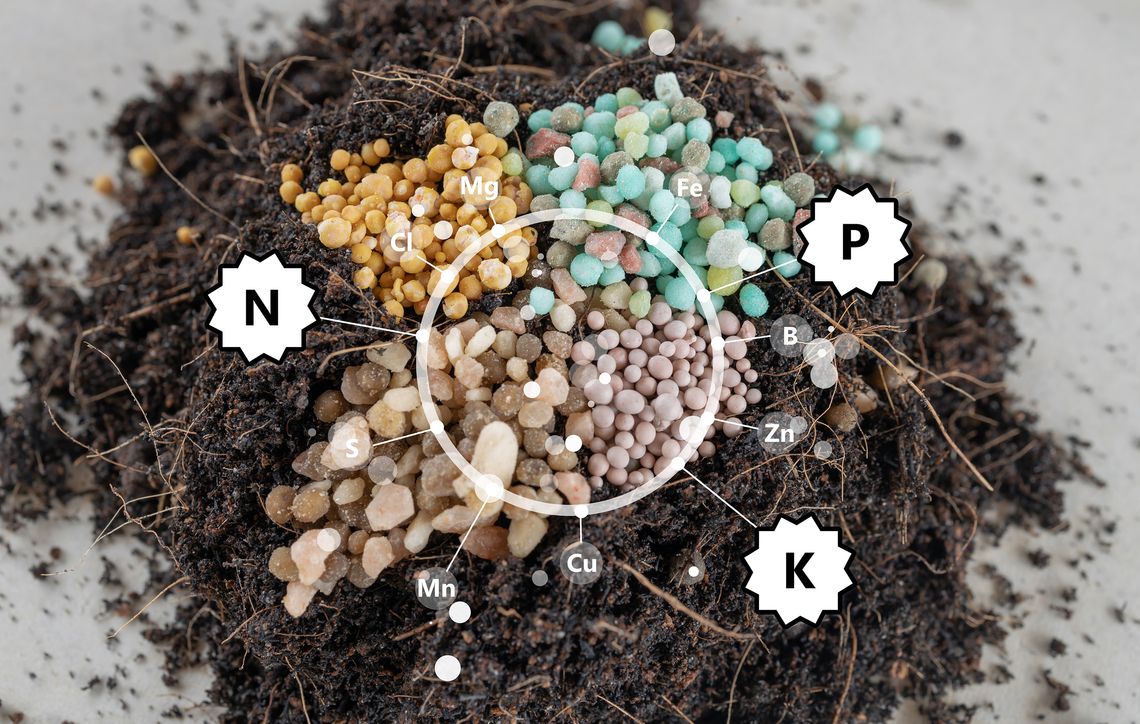Potassium is one of the nutrients needed by plants. Potassium (K) is absorbed in large amounts by plants. Potassium uptake by crops under good growing conditions is high, often equal to nitrogen (N) uptake.
Potassium is used in photosynthesis, sugar transport, water and nutrient movement, protein synthesis, and starch formation by plants. Adequate potassium in plants increases disease resistance, water stress tolerance, winter hardiness, tolerance to plant pests, and uptake efficiency of other nutrients. Potassium mobility is often related to soil texture. Movement is greatest in soils with more sand content. The buildup of potassium in soils is related to soil texture, with the greatest accumulation generally in clay soils, followed by loam and course-textured sands.
Plants lacking potassium will have shortened internodes, weak stalks, excessive lodging, and more leaf and stalk disease. They also will be lighter green when viewed from a distance. Severe deficiency will cause leaf drying along outer margins. Because potassium is mobile in plants, symptoms begin at the tips of lower leaves and move up the plant as the deficiency persists.
The inner portions of the leaves may have a stripped appearance. This is often confused with deficiency symptoms for sulfur, magnesium, and zinc.
There are three forms of potassium “pools’ in the soil: unavailable, slowly available or “fixed”, and readily available.
Unavailable potassium is within soil minerals. Over extremely long periods, these minerals will break down and potassium will be released. However, this process is much too slow to provide full potassium needs of growing plants.
Slowly available or ‘fixed” potassium is trapped between layers of clay minerals. This type of potassium is not measured by soil testing procedures, but, over time, it will become plant-available. Many Mississippi soils are dominated by clays with large shrink-swell capacities (cracks form in dry seasons). These soils can fix large amounts of potassium upon drying but release substantial amounts when rewetted.
Readily available potassium is the pool measured by soil-testing procedures. This is potassium present in the soil solution and potassium easily removed from soil clay edges. Potassium in the soil readily and regularly interchanges between the water in the soil and the clay particles.
When plants use the potassium present in the soil solutions, more potassium is released from the clay particles to the solution in response to the decrease in concentration. This interchange in the soil is extremely important to plant nutrition.


Comment
Comments